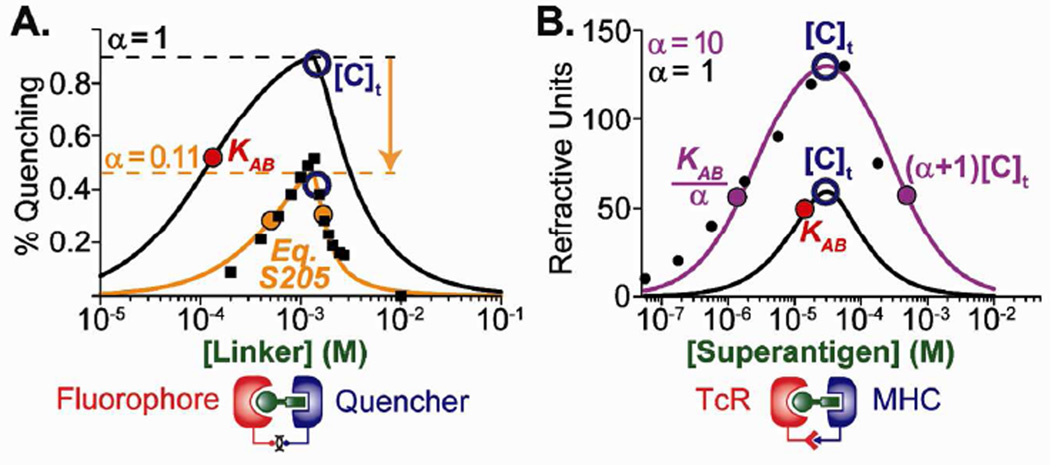Figure 5.
Examples of Quadrant III Cooperative Ternary Complexes. A. Supermolecular Assembly: the effects of negative cooperativity can be understood as a reduction in the height (eq 7) and width (eq S205) of a Quadrant III non-cooperative curve (data from Ref. 4). B. Antigen presentation: the effects of positive cooperativity can be understood as an increase in the height (eq 7) and/or width (eqs S191 and S192) of a Quadrant III non-cooperative curve (data from Ref. 20). The TF50 and TI50 expressions simplify for each quadrant, enabling conceptualization of the width as a perturbation on the non-cooperative reference curve.

